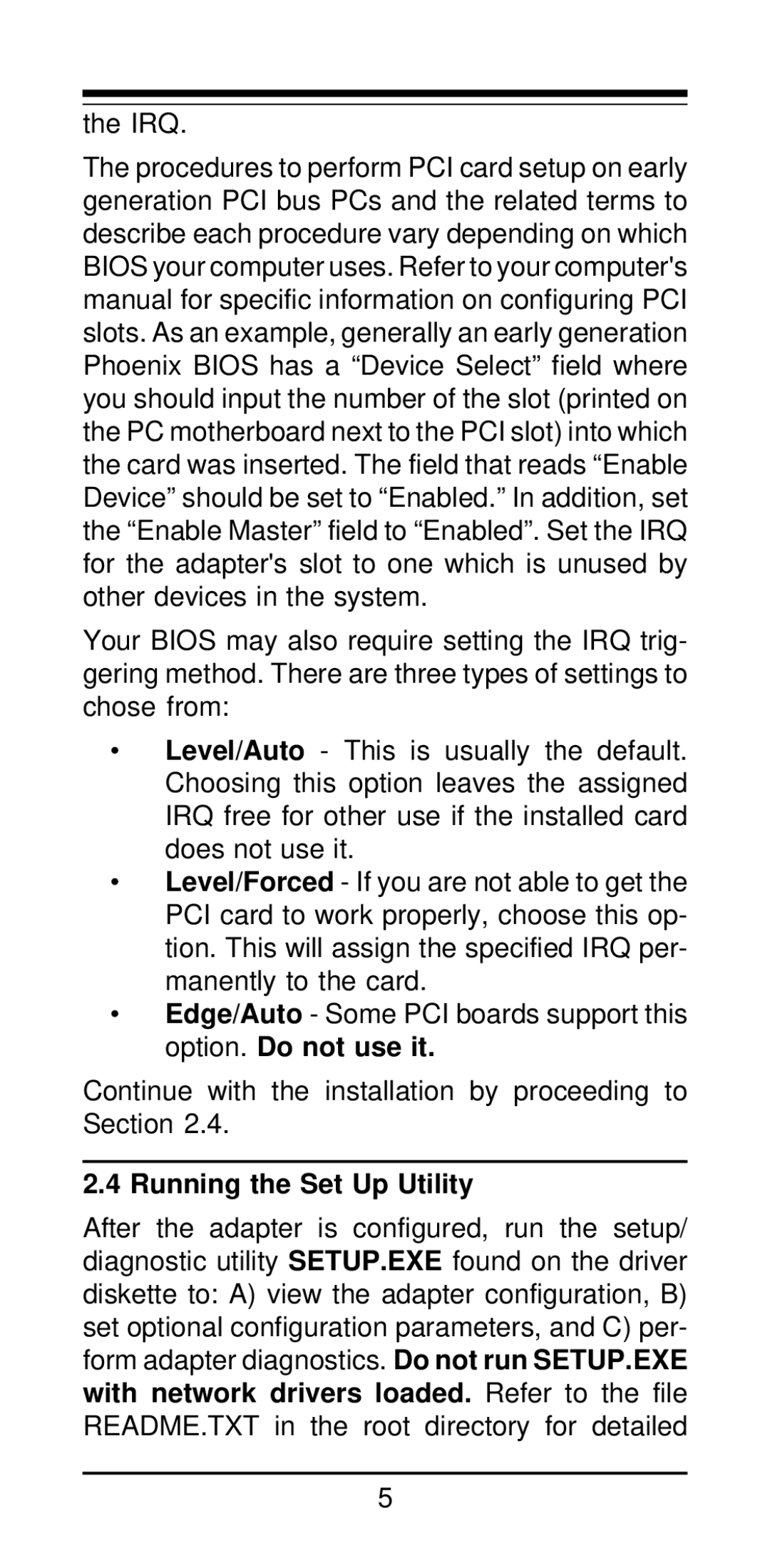
the IRQ.
The procedures to perform PCI card setup on early generation PCI bus PCs and the related terms to describe each procedure vary depending on which BIOS your computer uses. Refer to your computer's manual for specific information on configuring PCI slots. As an example, generally an early generation Phoenix BIOS has a “Device Select” field where you should input the number of the slot (printed on the PC motherboard next to the PCI slot) into which the card was inserted. The field that reads “Enable Device” should be set to “Enabled.” In addition, set the “Enable Master” field to “Enabled”. Set the IRQ for the adapter's slot to one which is unused by other devices in the system.
Your BIOS may also require setting the IRQ trig- gering method. There are three types of settings to chose from:
•Level/Auto - This is usually the default. Choosing this option leaves the assigned IRQ free for other use if the installed card does not use it.
•Level/Forced - If you are not able to get the PCI card to work properly, choose this op- tion. This will assign the specified IRQ per- manently to the card.
•Edge/Auto - Some PCI boards support this option. Do not use it.
Continue with the installation by proceeding to Section 2.4.
2.4 Running the Set Up Utility
After the adapter is configured, run the setup/ diagnostic utility SETUP.EXE found on the driver diskette to: A) view the adapter configuration, B) set optional configuration parameters, and C) per- form adapter diagnostics. Do not run SETUP.EXE with network drivers loaded. Refer to the file README.TXT in the root directory for detailed
5
